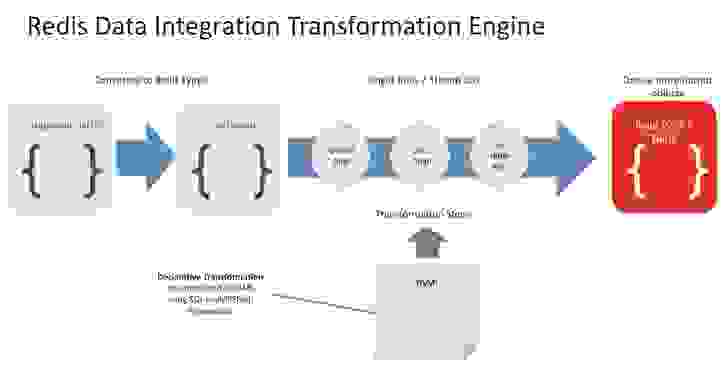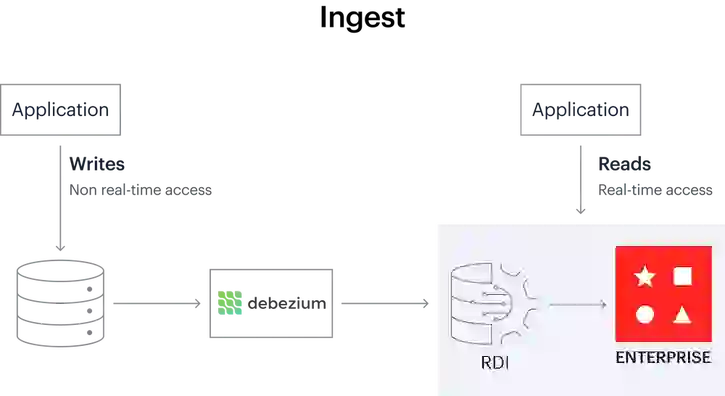
Learn more

Redis is announcing the public preview release of Redis Data Integration (RDI). RDI lets developers offload a database to Redis Enterprise, mirror application data, and operate at in-memory speeds. And you don’t need to invest in coding or integration efforts.
The underlying problem: Your existing database is too slow.
You have a lot of applications, a growing number of users, increasing technical demands, and an unrelenting demand for real-time response. Redis Enterprise provides real-time access to data and it scales horizontally, but how do you keep your Redis cache in line with your database so that all queries can be executed from the cache?
Some organizations decide to take it on themselves – only to discover how hard it is to build a cache prefetch (or refresh ahead, as it is sometimes called). To create one, you need to build a reliable streaming pipeline. That starts with capturing all data changes in the source database as they occur, and then translating the data to Redis data types to allow an application to fetch it. This process typically involves data transformations and denormalizations.
We saw users struggling to build these streaming pipelines on their own. It required integration of several components (Change Data Capture (CDC), streaming, and Redis connectors), coding transformations, error handling, and many other enterprise essential requirements. That tool-building time could be spent on more productive endeavors that the business is waiting for.
We decided to take on the challenge ourselves.
Redis Data Integration (RDI) is a tool that runs inside Redis Enterprise. It helps you synchronize data from your existing relational database into Redis in near real-time so that application read queries are completely offloaded from the relational database to Redis.

RDI pipelines have two stages:
The data transformation process
Debezium, an open-source CDC platform, captures changes to data in the source database and streams it into RDI. Within Redis, the data may be further filtered, transformed, and mapped to one or more Redis keys. RDI supports several Redis data types (Hash, JSON, Set, and Stream). RDI writes the data to the destination Redis database.

It does the heavy lifting, so developers can focus on application code instead of on integration chores and data transformation code.
RDI can connect with other CDC tools and streaming data. We already started building our ecosystem, and are happy to share that we have a technology partnership with Arcion.
With this integrated solution, developers have a simple way to stream changes from a variety of databases to Redis Enterprise and other data platforms, using RDI as the backbone.
Capturing changes from a source database and getting the data from one place to another is difficult enough. However, there is yet another challenge in moving data: the transformation part, which means filtering data and mapping the data to Redis data models.
RDI provides an option to specify all the filtering and transformation steps required per source table. This is called a job, in RDI terms; every job is a YAML file.

Filtering is important. CDC products provide complex filtering, but you have to write custom code. RDI does the same without coding. Instead, a declarative filter using SQL expressions or Jmespath functions is applied. RDI comes with additional custom Jmespath functions for the convenience of the job creator.
RDI has several levels of data transformation:
RDI includes a Trace tool that helps you create and troubleshoot complex data pipelines without writing custom code. That speeds up the process and reduces the required efforts and skill set.
After troubleshooting, amending the pipeline is done by a simple deploy command with no downtime.
Additional features in the public preview:
Learn more in our Redis Data Integration documentation.
RDI is ideally suited for applications that meet the following criteria:
This is a public preview. We are seeing RDI Ingest flow to general availability, we are working on features to integrate Redis in the opposite direction: to apply changes to Redis data to downstream databases.
RDI is currently available only for self-managed Redis Enterprise clusters.
If you are an existing customer of Redis Enterprise, download the RDI CLI package and follow the steps in the quick start guide. The installation guide walks you through installing and configuring the Debezium server. After you run a handful of RDI CLI commands, your pipeline will begin moving data from your source database to Redis.
If you are not an existing customer of Redis Enterprise, you need to first install Redis Enterprise Software for Kubernetes. Then download the RDI CLI package and follow the steps in the quick start guide.